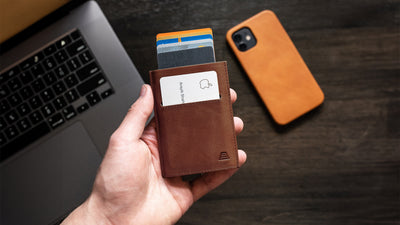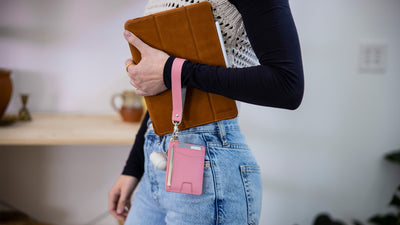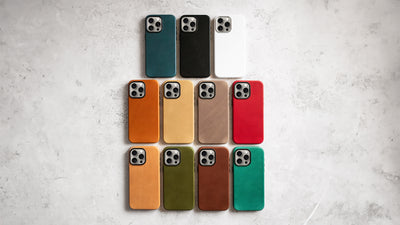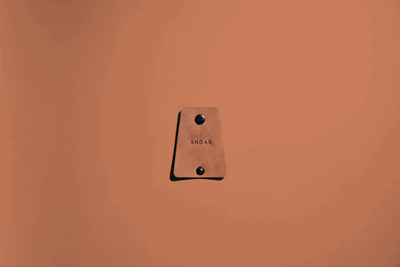The Blog
What Is Genuine Leather? The Truth About Genuine Leather and Is It Real?
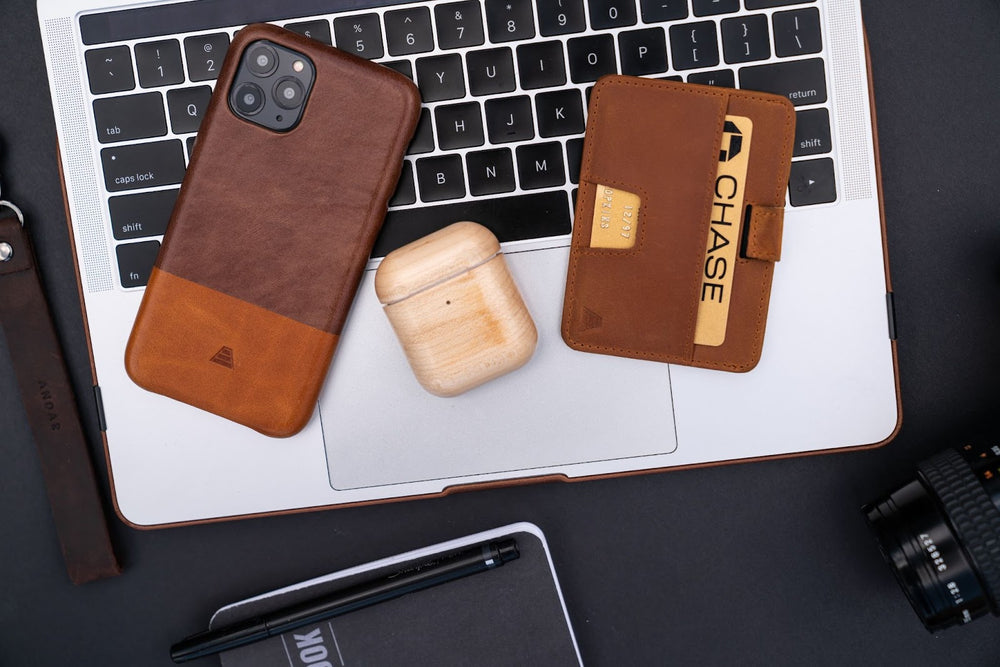
Genuine leather is a term that gets thrown around a lot in the world of leather. You may have been shopping for your nephew’s graduation present at one point and been walking around the department store looking for what would make the most sense for someone his age.
At first, maybe you thought cologne, but there’s no way you would be able to know what scent he may like. Then maybe you thought of a suit, but you do not know his dimensions. A common place to turn is a leather item.
Perhaps a wallet or a belt would make a lot of sense. While shopping in these department stores and approaching their wallet section, you will see an array of leather wallets that all claim to last a long time, be made of real cowhide, and have been sourced well.
These stands never seem to be set up well as every different type of leather wants to convince you that it is the real deal. This is always the case with “genuine” leather. When we hear the term genuine we generally trust it and think that it is exactly what the name connotes. However, this is not always the best practice when it comes to leather, as there is a bit of a misnomer with genuine leather.
Here we will look at what genuine leather truly is, what advantages and disadvantages it possesses, along with some buying tips for the future to avoid buying leather that really will not last your nephew past his sophomore year spring break.
The Sad Re-Definition of “Genuine” Leather
In this section, we will break down what genuine leather really is and how it is made by looking at where it is generally sourced and how it came about in the general consciousness. While there is not an easy way to trace who started first using the term “genuine,” there is no doubt that it was a marketing scheme before it was an industry term.
This means that those who produced the leather would never have attached this term to what we know as genuine leather. While there is nothing wrong with marketing in this way, it can easily confuse consumers into thinking that genuine leather is the best that there is, when we clearly have better options such as full-grain or top-grain leathers. That being said, there is still a use for genuine leather for most consumers.
The Most Simple of Answers
Genuine leather at its most simple and basic is the lowest grade of real leather, meaning it is usually made from the scraps and defective pieces leftover from making top-grain or full-grain leathers. It is true that these leathers are generally made from one single piece, whereas genuine leather is routinely different pieces that have been put together to make one leather item.
Not only is it made from the scraps of top grain leather, but it is also treated with less expensive tanning chemicals, which make for less thorough tanning altogether. In general, the appeal of genuine leather is the price point. You can buy that wallet for $20 that is made of genuine leather, but is it going to last? That is another issue.
How It Came About
While there is no way of knowing where the name “genuine” leather came from historically, we do have some information on how the process of its creation came about. According to records from the US Sustainability Alliance, genuine leather historically and still today is generally the byproduct of the meat industry.
This means that after the slaughter of the animals used for food, they take the cowhide from the process and make it genuine leather.
The problem with this is that the cuts that the processors need to make into the cow in order to get the best cuts of meat for their main business are ones that do not preserve the cow in the same way. They cut through some of the biggest and highest quality bits of the cowhide, thus making it ineligible for full-grain consideration.
On top of this, the cows (when alive) are not generally treated as leather cows are. Their skin is not protected and treated for one day being top-quality leather. Instead, genuine leather usually uses the scraps of this process. They are then sometimes sewn together to make a uniform piece, but that is ultimately from different animals altogether.
While genuine leather is misleading, there is a precise definition for what it is. Industry workers know what it is, but this information is rarely passed on to the consumer. That is where Andar is different.
Andar uses only full-grain leather, as we want to only deal in the highest quality to ensure that it lasts as long as it possibly can. This is one of the things that we are committed to with our entire company. However, we can still recognize the utility of an alternative ethos and the commitments that lie within it.
The Pros and Cons of Genuine Leather
While Andar does not generally deal with genuine leather, we can still recognize its utility in some situations. There are genuine pros for the process and leather itself that might not be as attainable with higher-end leather.
However, since the market is saturated with genuine leather (market share of over 55%), we are committed to providing a better alternative in the form of full-grain leather.
That being said, here are a few pros for genuine leather:
The Pros of Genuine Leather
The easiest and possibly the most legitimate reason to go with a genuine leather product is its price point. Genuine leather is generally cheaper than full grain or top grain leathers because it is so much cheaper to produce it. However, it is easy to understand that you will get what you pay for. Still, if you have a smaller budget, it may be a viable option for you.
For just a little bit more money, you can get a full-grain leather product that will last much longer over the course of your using it. This makes this pro more of a tradeoff, as it has a corresponding con that will be listed below.
Another pro of genuine leather products is the fact that it uses previously disregarded pieces of cowhide to be made. Not all leather can be the top of the line, so buying genuine leather (though not always the most ethical depending on your definition) is taking part in a more complete process of frugality since the meat and skin of the animals will be used.
In addition, there are some goods that are better as genuine leather goods. If the item that you want to put leather on is quite cheap, going with luxury leather may not always be the most viable option. In this way, a mix of leather is overall good for consumers and the market itself.
Something worth a mention is the fact that for a long time, since buying was primarily done in department stores for consumer goods, genuine leather was the only type of leather available to many people.
Luckily, this is no longer the case with high-quality leather being available from the comfort of your home. The fact that you are on this site proves it, so this “pro” is really one for the people of the past to sort of explain why genuine leather gets so much of the press for most leather companies.
While these are only a few pros, they are the biggest ones that we found to be true to how we conceptualize leather production and goods.
The Cons of Genuine Leather
In general, the cons will be easy to understand, and almost expected from something that is much cheaper with its production. However, we want to remind you that there is more genuine leather produced and consumed than any other type of leather. Therefore, these cons are the general cons for most leather you see in the United States.
The biggest con of genuine leather is the fact that it does not last nearly as long as full-grain leather (on average). It does last longer than PU and other non-organic leathers, but on average it lasts 20% of the lifespan of other leathers. This is due to the cheaper process of making and procuring the leather in the first place.
Another big con of genuine leather is the fact that there is no transparency with its production. It is notoriously part of a fast-fashion sort of ethos that does not value production transparency. This is why many have moved away from genuine leather and opted for more clearly ethical choices.
On a stylistic note, another con is the fact that genuine leather does not have the same ability to develop a patina. A patina is the natural scratches and wear that will show up with high-quality leather. A patina is the proverbial stripes earned by a leather product through use and durability.
A full-grain leather item such as Andar’s The Mav will develop a patina through years of using it, thus giving it a beautiful, personal look. Genuine leather will not develop this patina because of its cheaper processing.
Overall, the cons are almost exactly what you would expect, but the real answer to the question “what is genuine leather?” is quite simple. It is the lowest-quality real leather available and is also the most popular leather available.
Below, we will go through a few tips for your next leather item to decide whether you should buy genuine or full-grain or some other type. These are just suggestions, but they are backed by leather expertise.
Tips for When You Are Thinking About Buying Genuine Leather
The biggest tip that we can offer you is to really think about what the use of the item is going to be and whether or not the piece is worth the upgrade to a higher-quality, more durable leather product in the form of full grain or top grain leather. If the piece will not be used often and is more of a stepping stone wallet for your nephew, then by all means go with the genuine leather wallet.
However, if you really wish to have the piece last you (or whoever you are buying it for) a long time, consider the fact that genuine leather just does not last as long, as even looks worse as it ages in comparison with its full-grain leather counterpart.
In addition, since genuine leather can be a misleading name, do a quick search on the company itself. Look for customer testimonials that seem real. Look especially for the types of comments that satisfy your buying needs.
At the end of the day, any purchase is an investment and leather is no different. In fact, leather might be one of the few regular products that should be thought of as an investment more than it currently is.
Genuine Advice
Before buying genuine leather, understand its pros and cons and give real thought to the idea of investing in leather as opposed to consuming and repurchasing. We can guarantee that shifting to a more investment-oriented mindset about leather will not only help guide you toward high-quality, yet affordable leather, but will keep you from having to research leather again.
Sources:
US Hide, Skin & Leather Fact Sheet - The US Sustainability Alliance | The Sustainability Alliance
Global Leather Goods Market Size Report, 2021-2028 | Grand View Research.
